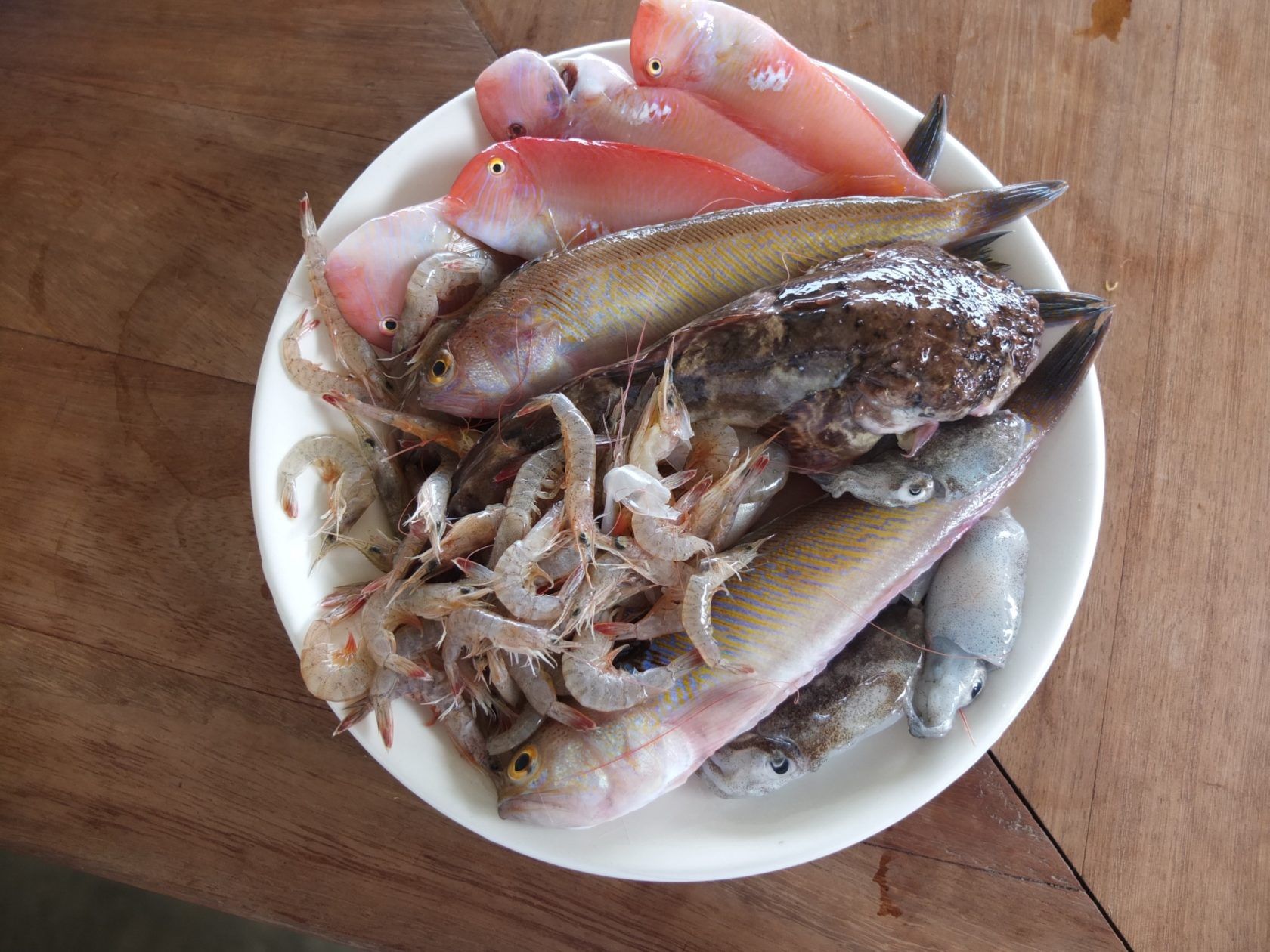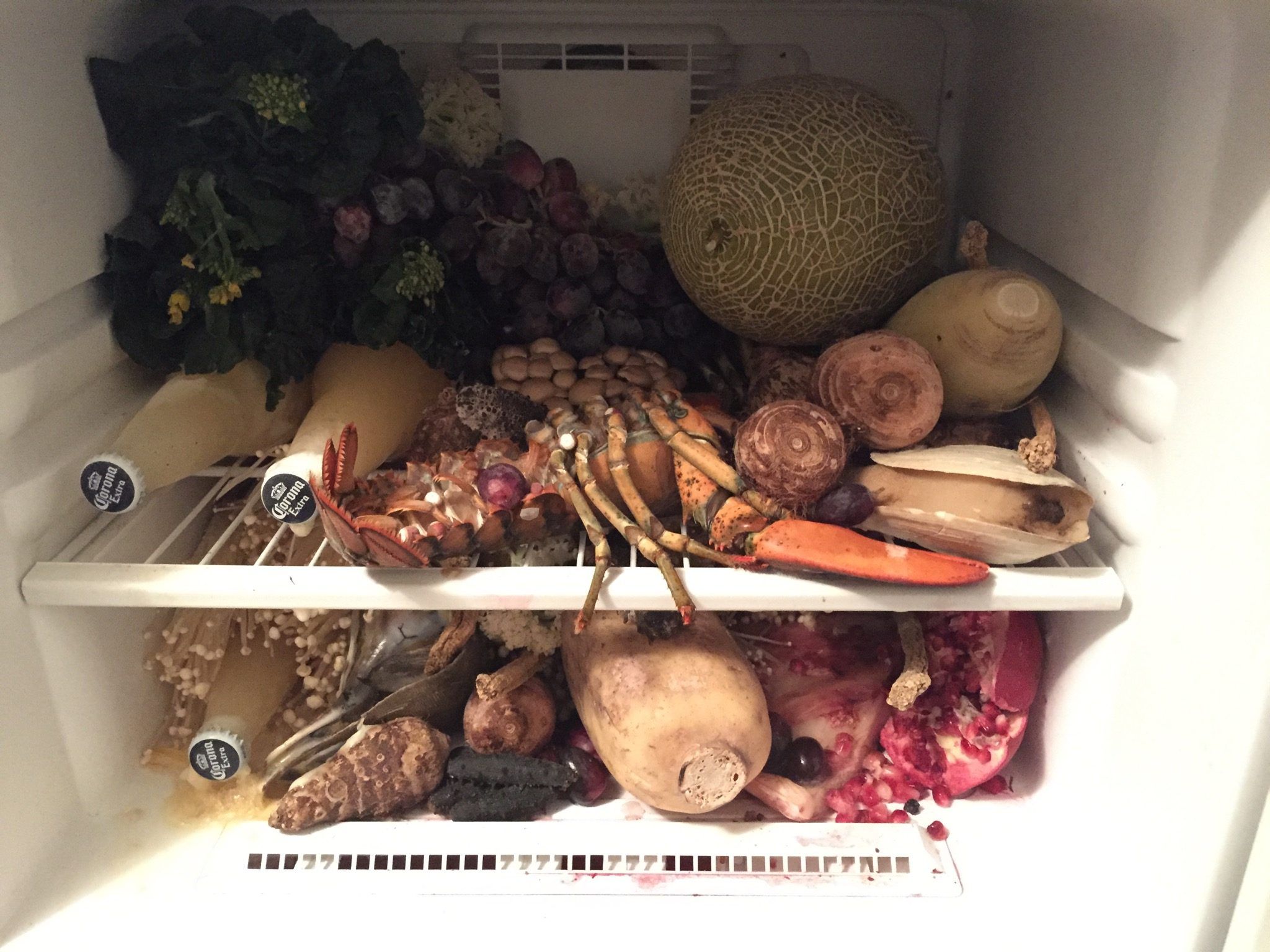Confinement Kitchen: Feast On Your Modernist Heroes With ESTHER CHOI’s Le Corbuffet
|Daniel Beatty Garcia

Turtle soup, Aylesbury duckling, and lobster sauce: László Moholy-Nagy’s 1937 menu for a dinner in honor of Walter Gropius was a cut above the average meal in interwar London. What’s striking about the menu is not just that it sounds gross. It also drips with privilege. Food, like pretty much everything in the United Kingdom, is a marker of social status, and the Bauhaus banquet was no exception.
Esther Choi, artist and writer, found the menu in 2014 while pursuing a doctorate in architectural history. After reading it, her mouth definitely not watering, she felt an idea take root: “to defuse some of the pretense surrounding the gastronomic and artistic cognoscenti” with a menu of her own. She called the dinner party Le Corbuffet, designing a series of dishes that (word)plays with food and its creative consumers. Rem Bruleé, Quiche Haring, and Martin Parrfait now have seats at the table in Choi’s book of “edible art and design classics.” The one-liners are good, the food photos better, and the satire is chef’s knife sharp. Skewering someone’s work, it turns out, can be done literally, and skewer Choi does. A starchitect’s masterpiece feels a lot less like an assertion of power when it’s wobbling on a plate.
“More than a cookbook, Le Corbuffet is a catalogue of performance art – food and dinner parties being staples of the genre – and a political manifesto, a call to cutlery as a call to arms.”


More than a cookbook, Le Corbuffet is a catalogue of performance art – food and dinner parties being staples of the genre – and a political manifesto, a call to cutlery as a call to arms. As Choi puts it in her introduction, “hospitality – the art of sharing – can be a platform for critical and political praxis.” In addition to the great modernists of architecture and design, she is inspired by Fluxus, the artist group who ate and gathered in New York in the 1960s and 1970s, when works such as Alison Knowles’ The Identical Lunch showed that, restaged and reheated, the ritual of a meal can subtly reveal the politics of everyday life.
Choi pushes the politics, but it’s the ritualism of the idea that really stands out. In his 1890 comparative study of religion and magic The Golden Bough, James Frazer demonstrated that almost every society has a ritual, covert or overt, of theophagy – the sacramental eating of one’s god(s). From Dionysiac feasts to the Christian Eucharist, one way to connect to the power of your deity or ancestor has always been to swallow them. By making an actual meal out of the elders of modernism, of the giants of the 20th-century avant-garde, Le Corbuffet is an atavistic communion.


Stuck at home in lockdown? Try:
DENISE SCOTT BROWNIES
The all-American brownie, devised in Boston in the early 20th century, is a product of the vernacular and the quotidian, akin to the objects featured in Denise Scott Brown and Robert Venturi’s taxonomy Learning from Las Vegas (1972). Yet as it turns out, cookies, not brownies, proved instrumental to forming Scott Brown’s connection with Venturi. Indeed, it was Scott Brown’s gesture of repeatedly saving a seat and a cookie for Venturi during University of Pennsylvania faculty meetings that facilitated their partnership – a testament to the power that a cookie can possess. As a wink to history, this recipe for Denise Scott Brownies adopts a cookie form. It features a subtle hint of smokiness from the unusual addition of black pepper – a nod to the pepper cookie popular in South Africa, where the architect pursued her studies – revealing a hidden complexity beneath its veneer of kitsch and panache.
Makes 14 to 16 cookies
1 cup (120 g) unbleached all-purpose flour
½ cup (42 g) Dutch-processed cocoa powder
½ tsp baking soda
½ tsp baking power
½ tsp sea salt
½ tsp black pepper
½ cup (1 stick/115 g) unsalted butter, at room temperature
½ cup (100 g) granulated sugar
¾ cup (150 g) coconut sugar or brown sugar
1½ tsp pure vanilla extract
1 large egg, at room temperature
6 ounces (170 g) semisweet chocolate chips, preferably Guittard
STEPS
1. Into a bowl, sift the flour, cocoa powder, baking soda, baking powder, salt, and pepper.
2. In a medium bowl, use an electric mixer set on low speed to cream the butter, sugar, coconut sugar, and vanilla for 3 minutes. Add the egg and beat on low speed for 15 seconds.
3. Add the sifted ingredients to the butter-egg mixture, gradually, beating on low speed until incorporated. Stir in the chocolate chips, then cover the bowl and chill the batter in the refrigerator for a minimum of 1 hour.
4. When ready to bake, preheat the oven to 350°F (180°C) and line a baking sheet with parchment paper or a silicone baking mat. Using a small ice-cream scoop or spoon, drop the chilled dough in heaping spoonfuls onto the lined baking sheet. Leave a 2-inch (5 cm) space between the cookies, as they will spread. Bake for 11 to 13 minutes, keeping a close eye on them. For crispier cookies, increase the baking time by a few minutes. Keep the dough in the refrigerator between batches.
5. Carefully transfer the cookies to a wire rack. They will be soft but their exteriors will continue to firm and crisp as they cool. Embellish them with your most fabulous decorations. Remember: less is not more here.


Credits
- Text: Daniel Beatty Garcia
- Images and Recipe: Esther Choi

